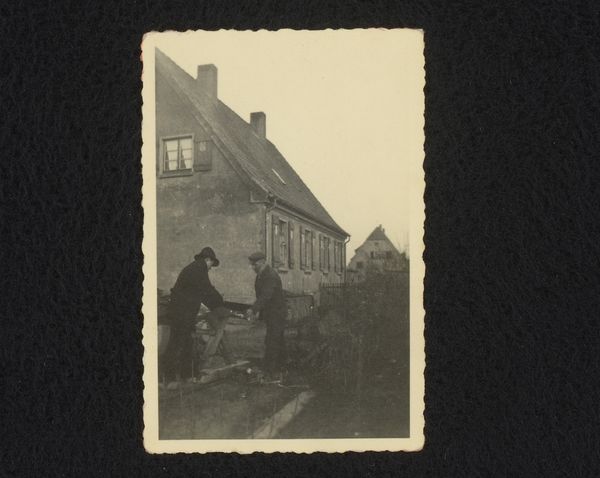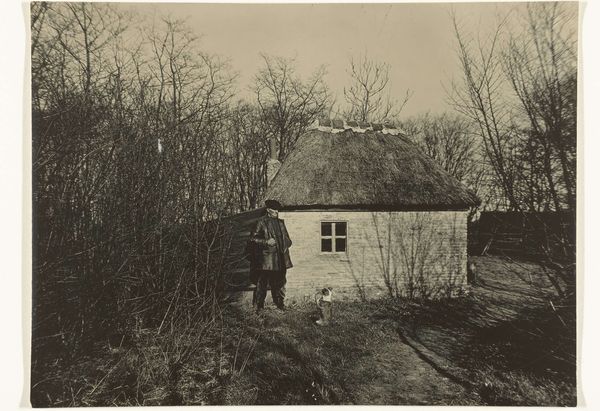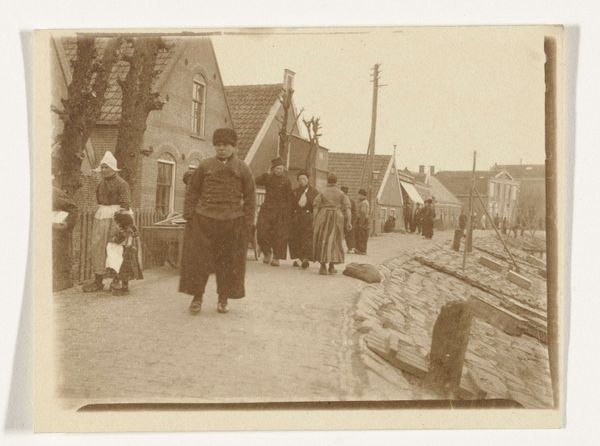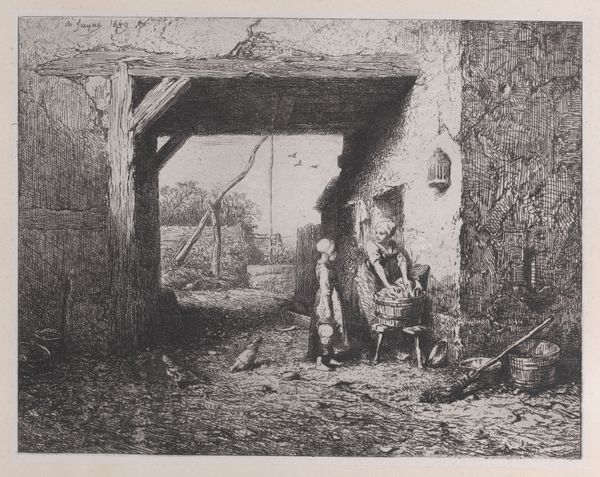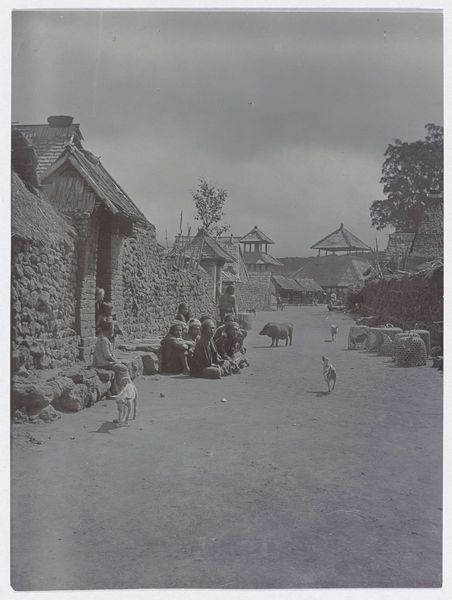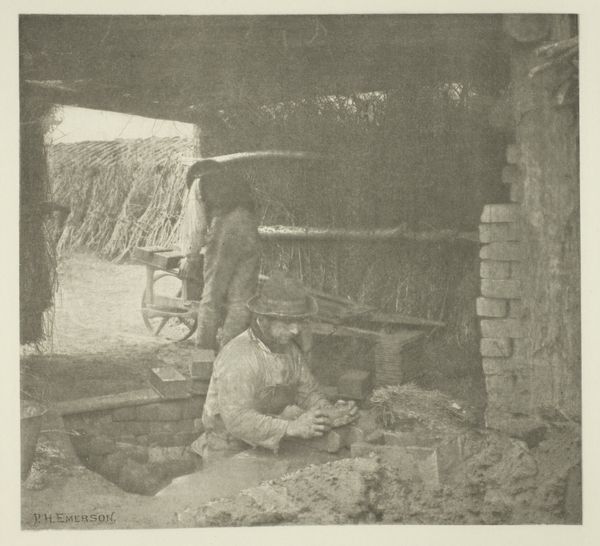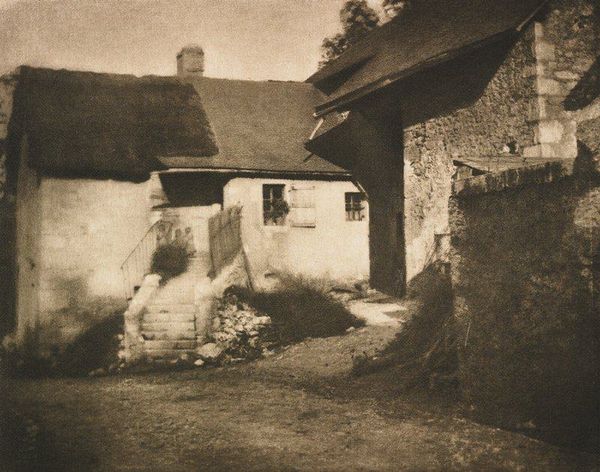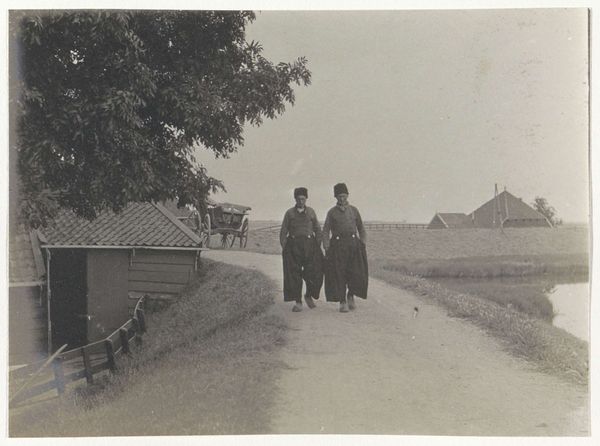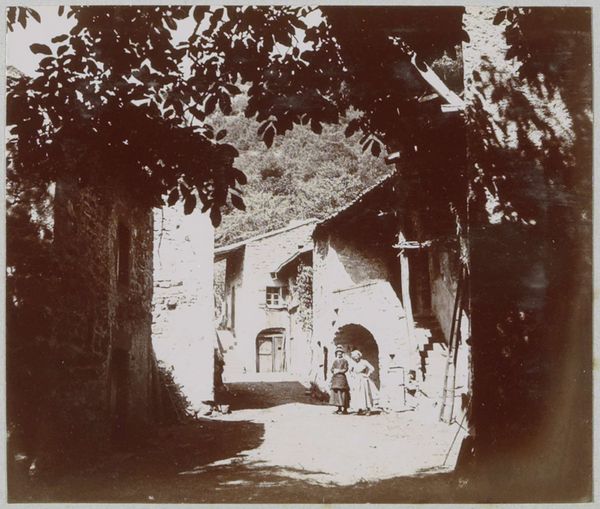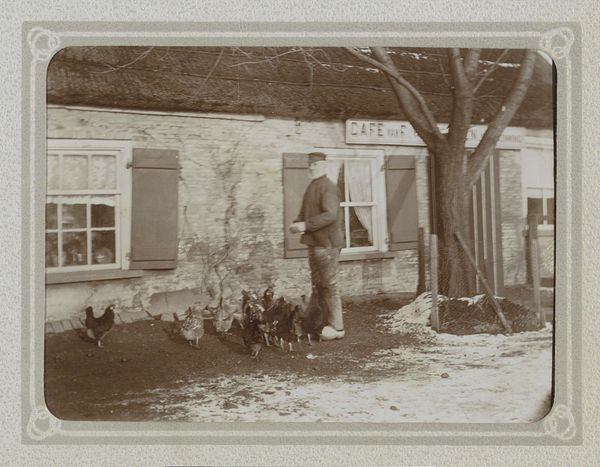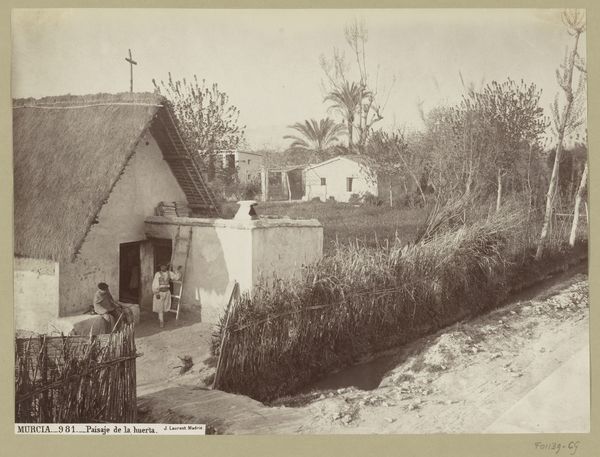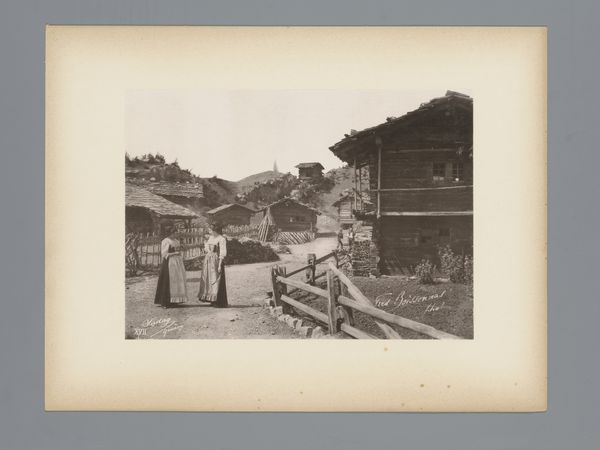
photography, gelatin-silver-print
#
portrait
#
landscape
#
photography
#
coloured pencil
#
gelatin-silver-print
#
realism
Dimensions: height 214 mm, width 275 mm
Copyright: Rijks Museum: Open Domain
Curator: We're looking at "Zoutelande," a gelatin-silver print by F.F.P. Bins, likely created between 1930 and 1931. It's a street scene, quite stark, with a solitary figure. Editor: My first impression is one of quiet constraint. The grayscale palette, the man's posture with his hands clasped, it all suggests a certain somber stillness. The light is interesting. Curator: Precisely. And consider the historical context: this photograph emerges from a period grappling with significant social and economic upheaval. The Netherlands, while neutral during the First World War, still felt its reverberations. Could this be a visual representation of postwar austerity, of the societal constraints felt by ordinary people? Editor: It could also be about the pure geometry of space. The way the building recedes, the strong diagonal line of the fence cutting across the composition...it all creates a fascinating sense of depth and tension. It’s all carefully balanced in shades of gray. Curator: Indeed. That rigid fence might represent enforced boundaries, both literally and metaphorically, and how it impedes the subject of the photograph. It leads my thoughts to notions of forced isolation of lower classes due to austerity, for instance. The photograph itself might even challenge viewers' perceived assumptions of those situations in such a time. Editor: But what about the use of light and shadow? The strong contrast gives a sculptural quality to the building, emphasizing its texture and form. Semiotically, it draws the viewers' attention, structuring the piece around it. The building seems permanent and indifferent, while the figure almost seems transient and temporal, just passing by. Curator: A perceptive insight! It raises questions about permanence, power, and those who possess both within societal structures. That building stands as a stark symbol of a capitalist class or the patriarchy, indifferent and unyielding in its construction. Editor: Fascinating. What initially appeared as a simple study in composition, form, and light becomes a deeper look at the complexities of both individual subjectivity and societal structures. Curator: Exactly. Looking through those historical and social lenses certainly allows us to examine those complexities. Editor: Well, for me, thinking about composition, the artist shows us what complexity arises from careful use of line and shade.
Comments
No comments
Be the first to comment and join the conversation on the ultimate creative platform.
